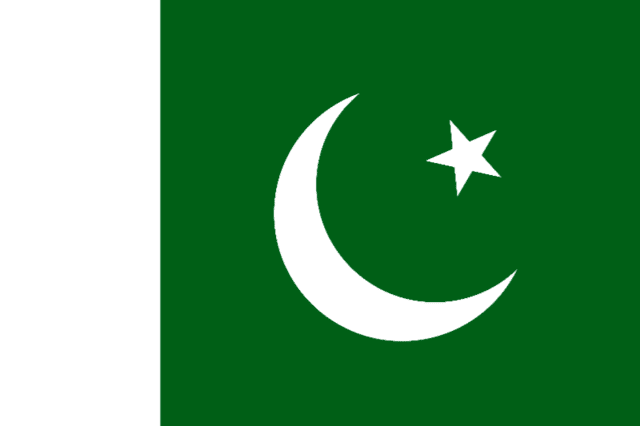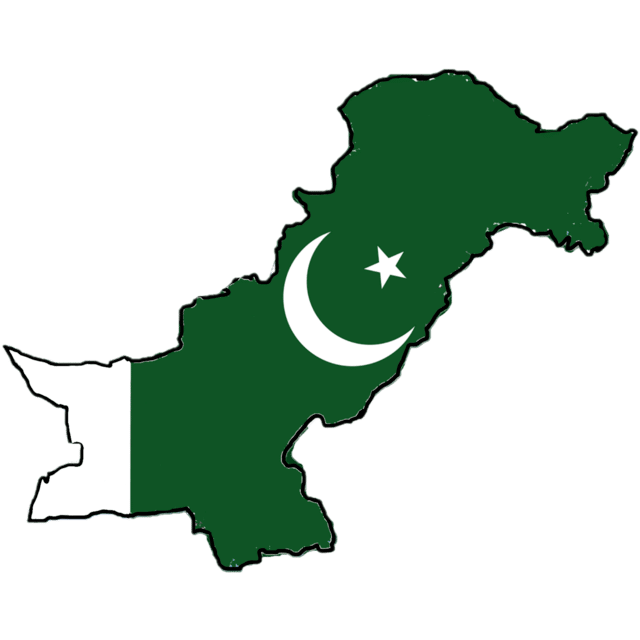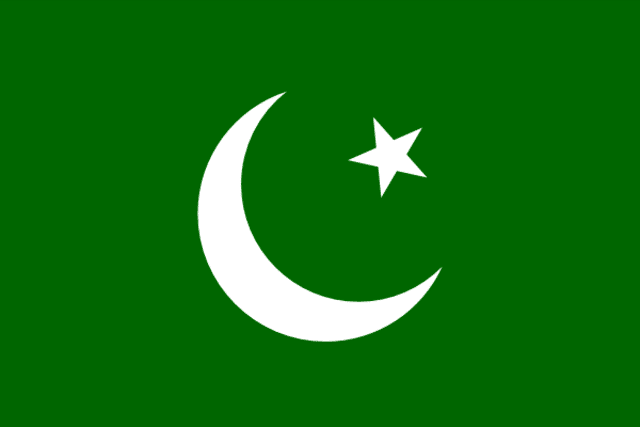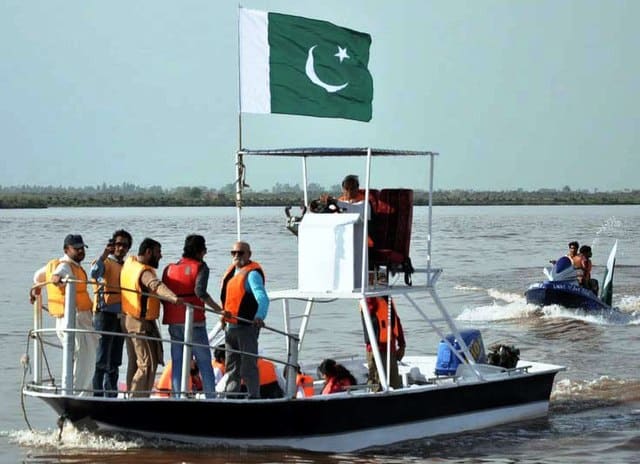Contents
Though it is based on the much earlier flag that was used during the country’s independence struggle, the Pakistan flag is four days older than the country itself. The peculiar shade of green used in the flag is so notable that it was named after Pakistan. This lends the Pakistan flag additional importance beyond its status as a representation of the Pakistani people and their country.
In this article, we will share some valuable information about the Pakistan flag, its history, and its meaning.

Characteristics Of Pakistan
Since you are interested in the Pakistan flag, it is also essential to know the characteristics of the country, such as its geographical location, languages spoken, religion, and so on. Pakistan is the second-largest Muslim nation after Indonesia and has over 231 million residents, making it the fifth-most populous nation in the world.
The nation is the second-largest in South Asia and the 33rd-largest country in the world by size, with a total land area of 340,509 square miles. Long before Pakistan was established, several peoples and cultures used the region as a path for military conquest. In other words, the nation is a giant mash-up of several civilizations that have happily coexisted.
The Himalayas, which are present to the north of Pakistan, have long served as a geographical and cultural barrier between South and Central Asia. The nation’s north and west are regularly prone to seismic activity as a natural consequence of a geologically young mountain range.
The population in this unfavorable northern region is often low since it is regularly hit by mild earthquakes. The vast bulk of the nation’s population is dispersed among various cities, the most populous of which has nearly 16 million residents.
The country keeps Pakistan Standard Time throughout the year. This is Coordinated Universal Time plus five hours, or UTC + 5:00. There are no time modifications during daylight saving time in Pakistan.
The diversified population of the nation is split into five main ethnic groupings. With more than 50% of the population, the Punjabis are the biggest ethnic group in the nation. Pashtuns, Sindhis, Muhajirs, and Balochs make up the remaining population. Additionally, Pakistan’s population speaks a variety of languages. Therefore, it is impossible to say that any one of them is spoken by the whole country. Although Urdu and English are both official languages in Pakistan, Urdu is the most often utilized language for interethnic communication.
However, other additional languages, including Punjabi, Sindhi, and Hindko, are still spoken as primary languages by various ethnic groups. Nearly every part of Pakistani society is infused with Islamist values and practices, and the vast majority of people in the nation are either Muslims or at the very least follow Islamic traditions. In addition, there is a large yet modest Christian population in the nation. Roman Catholicism is the most widely practiced religion, although there are adherents of many other religions as well.
Complicated History Of Pakistan
The Pakistan Flag was developed and created during the most important part of Pakistan’s history. Some of South Asia’s oldest prehistoric human civilizations originated in the region that encompasses modern-day Pakistan. The first known inhabitants of the region were the Lower Paleolithic Soanian people. Between 642 and 1219 CE, Islam flourished in the area, although Pakistan as a concept didn’t come into being until the 19th century.
Before the English took control of a tiny town and turned it into a port and military post in 1839, no part of the area that is now Pakistan was subject to any kind of colonial rule. The remaining territory was seized in 1843, and until its independence in 1947, the area that is now Pakistan was a part of the British Indian Empire.
Jinnah, the head of the Muslim League and the nation’s first governor-general, also served as the first speaker of the parliament before he passed away in 1948. From 1947 until 1956, Pakistan was a monarchy within the Commonwealth of Nations, with Queen Elizabeth II acting as the last head of state before that. However, martial law was imposed in 1958 and was in effect for around 44 months.
Following this time, the government was elected in 1960, but the nation’s democratic era came to an end in 1977. Political parties sought to restructure themselves following the proclamation of martial law’s end in December 1985 in order to take advantage of the changing conditions. Before the nation successfully adapted to its current structure of administration, a few battles broke out.

Pakistan Flag History
The All-India Muslim League approved the Pakistan flag as the official flag-to-be of the Dominion of Pakistan at a meeting of the Constituent Assembly of Pakistan on August 11, 1947, three days before the Partition of British India. It was kept when a constitution was established in 1956 and is now used as the national flag of the modern Islamic Republic of Pakistan.
The Pakistan flag consists of a vertical white stripe at the hoist end and a green field with a stylized slanted white crescent moon and a five-pointed star in the center. Although the solely permitted hue of green is dark green, “Pakistan green,” a noticeably deeper shade, is the official and most frequent portrayal of the color.
The All-India Muslim League flag, but with a Union Jack in the canton, was recommended as the Pakistan flag by Viceroy of India Louis Mountbatten in 1947. Muhammad Ali Jinnah rejected this idea because the Pakistani people would not support a flag that had both the Christian Saint George’s Cross and the Islamic star and crescent.
The Pakistan flag is prominently displayed on various significant days throughout the year, including Republic Day, Independence Day, and Defense Day. It is most famously mentioned in the third stanza of Pakistan’s national song. In addition, it is raised for the playing of the national anthem every morning at government buildings, workplaces, and schools before being lowered once more just before dusk.
At the Wagah-Attari border crossing between India and Pakistan, the Pakistan Rangers and their Indian Border Security Force colleagues perform an extremely elaborate flag-raising and lowering ritual each evening, which is frequently seen by hundreds of onlookers.
To commemorate the adoption of the Lahore Resolution in 1940 and the declaration of Pakistan as an independent Islamic republic with a constitution in 1956, both of which took place on the same day, the government of Pakistan has formalized rules and regulations about the flying of the national Pakistan flag.
It is to be flown all day on March 23 at full mast. The same rules also apply on August 14 each year in observance of Pakistan’s day of independence. This is the day when Pakistan, the nation-state and homeland for Muslims in the Indian subcontinent, was carved out of former British India.

Pakistan Flag Symbolism
A white line runs along the hoist of the Pakistan flag, which features a field of Pakistan green. In the middle of the green area of the flag are a white star and crescent insignia. The design was selected to symbolize the various religions practiced by the people of the country.
Islam, the most prevalent religion in Pakistan, has a history of using the color green as a symbol. The majority of the Pakistan flag is made up of a green field to symbolize that Islam is the dominant religion in the country.
The nation’s religious minority is represented by the white stripe. The pairing of the two hues symbolizes the founders’ desire to establish an Islamic country that upheld the rights of other religions. Even though the star and crescent emblem is a well-known representation of Islam, it also stands for growth and brightness when it appears on the Pakistan flag.

Pakistan National Anthem
Other than the flag, another significant symbol of the country is its national anthem. However, they didn’t have a national anthem when Pakistan gained independence. Pakistanis ultimately decide on “Pakistan Azadi,” which translates to “Free Pakistan,” as their national song.
After some time, Muhammad Ali Jinnah decides that Pakistan needs a national hymn and commissions the Hindu poet Jagannath Azad to create one. In order to underline the national unity of Pakistan’s people, who have many different ethnic identities and religious beliefs, he purposefully chose a non-Muslim poet.
A few days later, Pakistan’s new national song started to play on Pakistani radios in every home. But not many Pakistanis enjoyed Jagannath Azad’s hymn. Therefore, 18 months later, the government held a competition to compose a new national song.
The winner of this competition would get 5000 rupees for his or her first poem that was chosen. Additionally, it revealed that the musician would receive 5000 rupees for the finest composition performed by the chosen starter.
The competition’s winner was finally established, and Pakistan’s national song was ratified in August 1954. The anthem’s creator is Pakistani musician Ahmed Ghulamali Chagla, and it was written by Abu Al-Asar Hafeez Jalandhari.
Bottom Line
As you can see, Pakistan has only ever flown one flag throughout its history. Although Pakistan was originally a part of British India, the colonial Indian flag had no impact on the Pakistan flag.
Amiruddin Kidwai, a leader of a political party that fought for the creation of an independent nation for Indian Muslims, developed the flag. Pakistan is one of the few countries that has flown the same flag throughout history, and the country has been independent since the flag was changed.